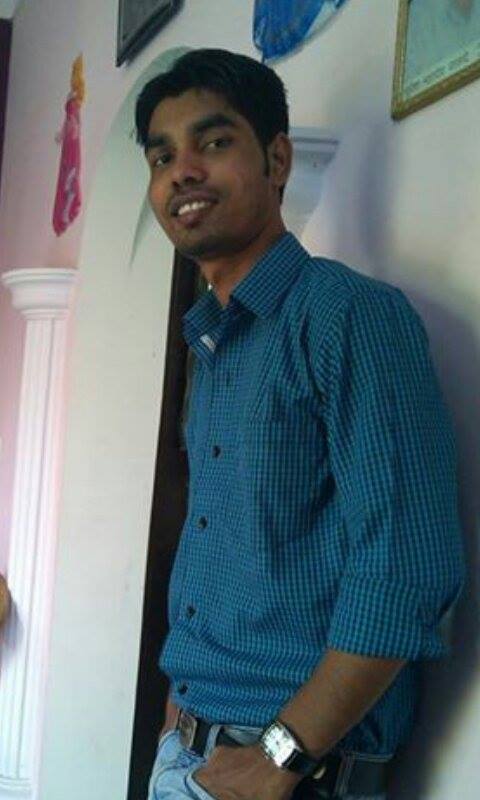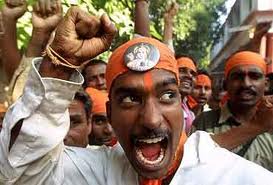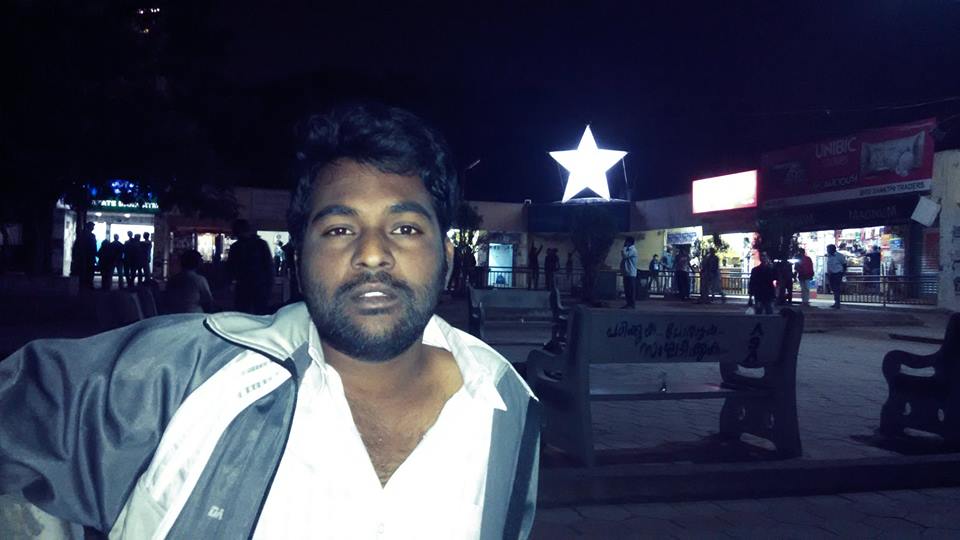Vicky Nandgaye
 Nowadays ‘NaMo’ seems like a brand which is supposed to bring reform in an individual’s life. Modi consistently enjoyed the Chief Ministership of Gujarat from 7 October 2001 to 22 May 2014. Then over that period of operation of the so-called “Gujarat Model” his image grew across the nation with the help of the media. This model is nothing but a pro-corporate structure, apart from that no one knows what exactly it is. Further, a recent Hindustan Times news report refers to the Nobel Laureate Economist Amartya Sen (July 2015) saying “when people say that Gujarat was a successful economic model, they overlook the fact that, in terms of undernourishment, illiteracy, lack of immunisation, Gujarat has one of the worst records, and as the Economist magazine points out, under Modi’s chief-ministership, Gujarat’s position slipped down rather than slid up. It was slightly better than Bihar earlier and it became worse than Bihar.”
Nowadays ‘NaMo’ seems like a brand which is supposed to bring reform in an individual’s life. Modi consistently enjoyed the Chief Ministership of Gujarat from 7 October 2001 to 22 May 2014. Then over that period of operation of the so-called “Gujarat Model” his image grew across the nation with the help of the media. This model is nothing but a pro-corporate structure, apart from that no one knows what exactly it is. Further, a recent Hindustan Times news report refers to the Nobel Laureate Economist Amartya Sen (July 2015) saying “when people say that Gujarat was a successful economic model, they overlook the fact that, in terms of undernourishment, illiteracy, lack of immunisation, Gujarat has one of the worst records, and as the Economist magazine points out, under Modi’s chief-ministership, Gujarat’s position slipped down rather than slid up. It was slightly better than Bihar earlier and it became worse than Bihar.”
In addition, columnist Jayati Ghosh (Aug. 2014) wrote about the ‘Gujarat Model’ in Frontline, reviewing the book titled “Growth or Development: Which way is Gujarat going?’ edited by Indira Hirway, Amita Shah and Ghanshyam Shah. Here she narrates a story in the same line as above, “Even when compared with neighbouring Maharashtra (a state hardly known for its development model), the case of Gujarat is peculiar because the status of labour has deteriorated in spite of rapid income growth.” Again on a similar note, she says “urban beautification projects frequently demolish slums and displace the poor. And the Basic Services for the Urban Poor (BSUP) schemes for the rehabilitation of project affected people are located outside the city.” These schemes are thereby prepared to dislocate the people from their workplaces. In the case of the health sector, the state lags far behind other states. On nutritional indicators, Gujarat ranked 13 among 17 major Indian states and below Odisha and Uttar Pradesh. Nearly 45 percent children below five are undernourished. Even dropout rate among girls is higher than the national average. Though privatisation of education has increased, it could not improve the quality of education.
Moreover, it appears that the fourth pillar of democracy in India is owned by Mr. Modi, very clearly. This medium is supposed to disseminate information on public related issues and should consider their stakes and concerns. However, almost all news channels were engaged in projecting only one hero and at the same time painting all others as villains. It means respected PM became PM not as a result of one of the world’s biggest democratic elections, but in a one-sided contest of sorts. Here, this commentary does not criticise the efforts made by the BJP during the elections but it’s a simple reflection over its policy and programme agenda. More specifically, this article seeks to highlight the enormous differences between what they preached (commitments, acche din promises) and their achievements. During the election campaign, the masses knew that ‘Development’ was one of the agendas in the BJP’s manifesto. However, after the completion of one year and few months in government, one can explicitly discern ‘what is development and for whom.’
So, then what are the grounds which make the current PM a deserving candidate in the PMO office? Almost all news channels and print media are playing a role in hiding the aforementioned facts about the then Modi government in Gujarat. In spite of Mr. Narendra Modi’s very genuine sympathy towards the corporate lobby, the party got immense assistance from the commoners, which ushered him to complete a successful journey from the Owner of a Tea stall (Chai wala) to the PM of the biggest democratic state. His government’s activities too, after coming into power, continue to endeavour to manipulate electors in the name of ‘development’.
Similarly, in Maharashtra, the BJP government is no exception since it promotes and seeks to strategically instil its ‘Hindutva prem’ among the people. Maharashtra government allocated about Rs. 6500 crore and Rs. 5000 for Scheduled Castes and Scheduled Tribes respectively, in its budget. Despite setting up a fund, it remains unspent or spent on programmes consistent with the very problems of the backward communities. This year ten lakh rupees are being spent on Varkaris by donating harp instruments to them, as decided by the Department of Social Justice. Inevitably, the entire agenda seems to revolve around the government’s fondness for Hinduism.

On the one hand people were fed up with the then UPA government and their various scams, corruption. On the other, the only one option available was the BJP helped by the media influenced ‘Modi effect’. The present government is engaged in launching different schemes for the people: it has taken various initiatives like NITI Aayog, Clean India Mission, Beti Bachao, Beti Padhao (Save Daughters, Educate Daughters), Sukanya Samriddhi account, beef ban in Maharashtra state, Yoga Day, Selfie With Daughter and several others. But, this paper will focus on only a few.
Each scheme has numerous repercussions. However, the honourable PM is not in a mood to take an account of the same (aftermath of schemes). More interestingly, all these schemes are not getting equal weightage as required. For instance, for the ‘Clean India Mission’, Modi nominated nine different personalities from different backgrounds to promote it. A TV show, namely ‘Tarak Mehta Ka Ooltah Chashmah’, is one of the programmes chosen to publicize it. It is a daily show aired on SAB TV from Monday to Friday. Further this show appears to be a Narendra Modi sponsored show because it frequently engages in promoting Brahmanic philosophy.
Nowadays ‘Gandhigiri’ is highlighted by the producer to propagate ahimsa as the only weapon against corruption in such a way that Gandhi (only) was a hero. Also, it’s an ultimatum to inculcate Gandhian philosophy (Hindutva) among viewers. Moreover, the producer often manages to incorporate schemes of the present NDA government, such as ‘Beti Bachao, Beti Padhao’, in the shows. This scheme, no doubt, is a new approach in addressing women’s issues but there are no productive inputs coming from either the BJP politburo or the RSS ideologues which address the concerns of women from dalit-adivasi and other marginalised communities.
In addition, the recent Yoga campaign is known to everyone. This ‘International day’ has in fact nothing to do with common people who are often toiling at laborious work all day and perhaps that is their sincere Yoga. But the Yoga campaign mushrooms across the nation through big hoardings, posters, banners at bus stops, railway stations, even through advertisements on news channels, news papers. It’s a strategic game plan of the current government to introduce the scheme so that it goes on to promote their so-called ‘Hindu ideology.’
Now, they have come to their ultimate gameplan. They have started their politics of Hinduisation of entire nation alongside their cultural wing, RSS. For the sake of gaining a Dalit vote bank, RSS Chief Mohan Bhagwat ostensibly claimed that Babasaheb was a follower of their Hindu ideology. Indeed, this kind of cheap speech does not suit him. Recently, BJP and RSS celebrated the 124th birth anniversary of Dr. Bhimrao Ambedkar and are further planning to observe his 125th birth anniversary though Dr. Ambedkar was antagonistic to their Hindutva philosophy.
There was a debate aired on Times Now news channel on 13th April 2015 titled “Ambedkar’s legacy debate – The newshour debate: Congress and RSS tug of war”. Both Congress and RSS spokespersons sought to appropriate Ambedkar and his legacy by using false arguments in line with their own created histories. But Ambedkar had clearly asserted “as long as caste in India does exist, Hindus will hardly intermarry or have any social intercourse with outsiders; and if Hindus migrate to other regions on earth, Indian caste would become a world problem” (Ambedkar, B. R. 1916 p.2). Since Phule-Shahu-Ambedkar believed in the principles of equality, liberty and justice which can’t be realized unless Brahmanic ideology and religious thoughts are erased from people’s minds. Indian caste system is rooted in Hinduism. However, this was rejected by the RSS spokesperson and the BJP too, in the same debate.
BJP does not stop here: in recent news, the Maharashtra CM Devendra Fadnavis, has initiated a push to confer Bharat Ratna on Jotirao Phule and Savitribai Phule, the social activists who fought for common causes of equality, liberty, fraternity and justice relentlessly throughout their lives. The government in the state is looking forward to expand its horizon by appropriating these social reformers who had never accepted their so-called Hindutva beliefs.
Although the Indian constitution makes India a secular state and supports religious diversity, the absence of political will ensures that those guidelines can’t be fulfilled. Every action of the state has often sought to perpetuate pro-Hindu faith, because the Brahmanic ruling classes have the dream to make India a ‘Hindu Rashtra’ and ‘Akhand Bharat’. So inevitably, every step of the BJP team is against the marginalized. For instance, the recent ‘Ghar Wapsi’ programme to gain numbers; the ‘beef ban’ in Maharashtra which intentionally hits Muslims’ and Dalits’ livelihood options, in the guise of not hurting ‘Hindu sentiments’.
Often, ‘meat culture’ is negated and destroyed by Brahminism. Kancha Ilaiah (2012) argued “in the sociological language of clever scholarship, if a tribal gave up eating meat it was tantamount to getting ‘sanskritized’, but if a Brahmin started eating meat and fish he/she was not ‘tribalised’. If at all they are changed, they just got ‘westernised’! ” Thus, this sort of discrimination is practised by Brahmins against Dalits and Adivasis.

The ‘Sangh Parivar’ has several organisations viz. Rashtriya Swayamsevak Sangh (RSS), Bharatiya Janata Party (BJP), Swadeshi Jagaran Manch (SJM), Bharatiya Kisan Sangh (BKS), Bharatiya Mazdoor Sangh (BMS), Vishva Hindu Parishad (VHP), Akhil Bharatiya Vidyarthi Parishad (ABVP), Bajrang Dal and so forth. Almost all wings of Sangh espouse the very ideology of Hindutva, Hindu nationalism and Akhand Bharat. As a result, each of these organisations separately reinforce the same aforesaid philosophy.
Some of the Sangh outfits are often named at international level for their violent strategies, efforts to incite communal violence against minority groups etc in various parts of the country. For instance, according to a news report: “a US based risk management and consulting company has put the Rashtriya Swayamsevak Sangh (RSS) in its category of ‘Threat Group’ and called it “a shadowy, discriminatory group that seeks to establish a Hindu Rashtra, a Hindu Nation.” Their actions across the nation have indeed invariably proven to be against fundamental rights of citizens living in a secular state.
The Sangh parivar is trying intensely to achieve its target and make use of every opportunity to propagate its ideology. Other political and social groups are not in a position to fight against these very deceptive institutions because they have a hold on political power in the centre and several states as well. Hence, it falls upon the masses to be attentive to every single action of the Government (and the Sangh) which pretends to be in public interest but is not.
~
References
* Ambedkar’s legacy debate – The newshour debate: Congress and RSS tug of war
https://www.youtube.com/watch?v=xr1-wyesydk
* Ambedkar, B. R. (1916). Castes in India: Their mechanism, genesis and development. Patrika Publications.
* “Ambedkar believed in Sangh ideology, had called workers symbols of unity: Bhagwat”: http://indiatoday.intoday.in/story/mohan-bhagwat-ambedkar-sangh-ideology-rss/1/418998.html
* “America enlisted RSS in one of the Biggest Terrorist Organisation in the World”: http://www.assam123.com/america-enlisted-rss-one-biggest-terrorist-organisation-world/
* “Backward Varkaryanchi harp on the Vikas Nidhi”:
http://www.loksatta.com/mumbai-news/backward-development-fund-sue-to-buy-vina-and-pakhwaj-1119906/
* Gujarat model: The real story, Jayati Ghosh. Frontline (Print edition : August 22, 2014): http://www.frontline.in/columns/Jayati_Ghosh/gujarat-model-the-real-story/article6279847.ece
* Ilaiah, K. (2012). Post-Hindu India: a discourse in Dalit-Bahujan, socio-spiritual and scientific revolution. SAGE Publications India.
* Save Daughters, Educate Daughters:
http://economictimes.indiatimes.com/news/politics-and-nation/devendra-fadnavis-seeks-bharat-ratna-for-jyotirao-savitribai-phule/articleshow/48023125.cms
* “Where poor are concerned, there is very little change: Amartya Sen”: http://www.hindustantimes.com/india-news/india-trying-to-be-industrial-giant-with-an-illiterate-unhealthy-labour-force-amartya-sen/article1-1367355.aspx
~~~
Vicky Nandgaye is an M.Phil student in Management and Labour Studies at Tata Institute of Social Sciences, Mumbai. His research area is informal sector, focusing on precarious employment of construction workers in Mumbai. He is from Nagpur, and has been associated with “Youth for Self & Social Change”, an NGO which helps students, especially slum students, prepare for higher education and in soft skills development since 2009.
Cartoons by Unnamati Syama Sundar.










